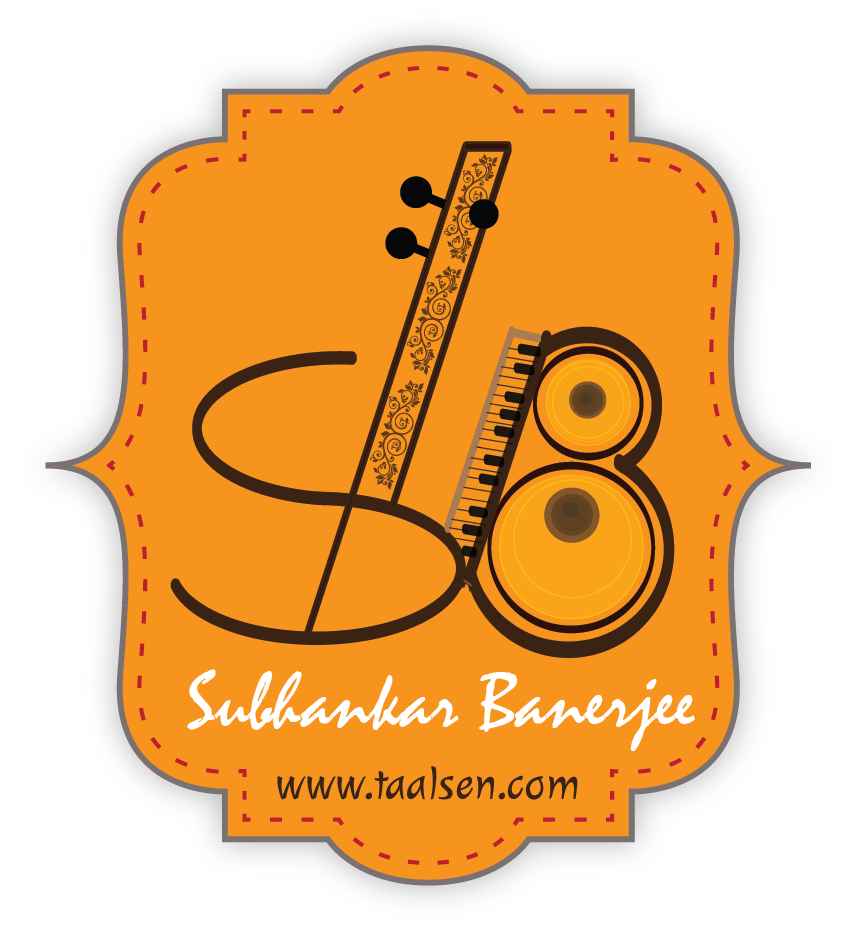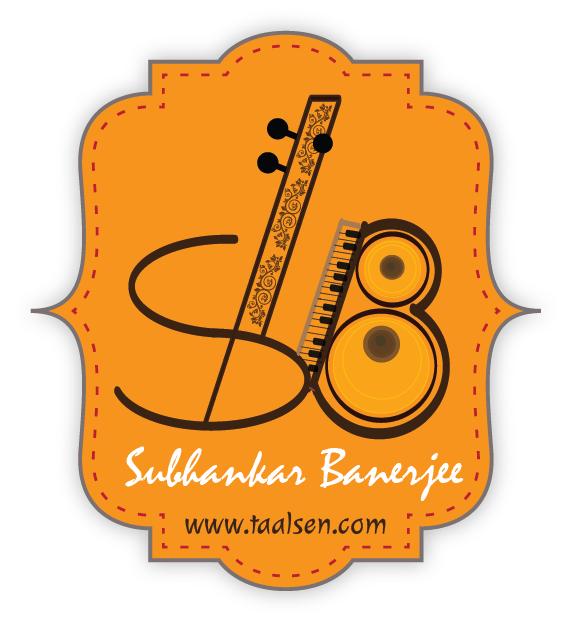Personnel: Tejendra Narayan Majumdar (sarod); Dr. Mysore M. Manjunath; Subhankar Banerjee (tabla).
Liner Note Author: Ken Hunt.
Recording information: Virtual Studios, Sanjaya, Gujarat, India.
Audio Mixer: Derek Roberts.
Photographer: Dekko.
BHAVA
Both of India’s grammatically similar, yet idiomatically different art music systems prize the duet as an alternative flight path to soaring, spontaneously conceived composition. Potentially, duets are an improvisatory performance form of exquisite piquancy. The oral and written literature of the Indian subcontinent’s music is full of memories of encounters of the duet kind’. Some drew tears. Some drew gasps of admiration. Some drew blood. It is said ‘losers’ in what had become ‘ego jousts’ keeled over stone dead during or after particularly combative encounters which, in jazz parlance, would be called ‘cutting contests’. Blessedly, Dr. Mysore M. Manjunath and Tejendra Narayan Majumdar’s achievement in spontaneous creativity is definitely on an artistically benign scale.
Sarod and violin is a seldom heard combination. In this particular case it bridges the subcontinent’s North-South divide too. Over the last fifty years only the sarod-violin duet of Ali Akbar Khan and L. Subramaniam has staked any claim to the combination. This recording preserves history in the making. Astonishingly, given the musical heights to be heard here, there was no rehearsal, no pre-discussion. The musicians tuned, set microphone levels and balances, and flew.
Violin has an enduring place in Karnatic (South Indian) hearts. Originally a loan instrument from Europe, it lodged itself deep in the South Indian consciousness. It has long associations with art music dating back to Baluswami Dikshitar and Tanjore Vadivelu through to the Tanjore Quartette of the nineteenth century C.E. and the Subramaniam dynasty of modern times. Most instruments follow unmodified European concert violins in construction, but are tuned to Indian sonorities and usually positioned on the upper chest, rather than under the chin. Mysore M. Manjunath, the son of Prof.S. Mahadevappa, is, incidentally, a seasoned duettist through his double-violin duets with his brother Mysore M. Nagaraj under the collective name of the Mysore Brothers. The Mysore part of their names is a centuries-old artistic convention. Other ‘Mysore notables’ included the musician-composers Mysore Sadasiva Rao and Mysore Vasudevacharyar and the veena maestro Mysore V. Ventatagiriappa. Its appearance indicates Mysore as their town of origin or where they settled.
Tejendra Narayan Majumdar studied sarod under Bahadur Khan, nephew and disciple of Allauddin Khan, and later with Ali Akbar Khan, Allauddin Khan’s son and the later khalifa (head) of the Maihar-Seniya gharana or school of playing and artistic lineage. Tejendra Narayan represents musical tradition on the cusp of change. As well as studying music, he is a Physics graduate and completed a post-graduate degree in computer science. It is interesting to speculate about how the two disciplines have coalesced in his mind.
Music is better served when it is not a competition but a mind-melt. The most exciting duets are ones in which two musicians morph into fingers on a hand.
That is what is happening here in what would be called in Hindustani (Northern Indian) terminology a jugalbandi (duet). As Manjunath spelled it out afterwards, they were “two musicians representing two different music systems, yet performing together with their respective accompanists, constantly maintaining the tradition of their respective systems, adhering strictly to the technical aspects and at the same time complementing each other” in the service of melody.
In Hindustani musicology, when musicians achieve bhava they have not just got under the skin of a ri£g, they have revealed the ri£g’s soul. To reach this state requires restraint and economy, tension and release in judicious, finely balanced measures. Achieving bhava is difficult enough when there is one principal soloist. When two principal soloists, let alone two representing two different musical traditions, achieve one vision, the gods must indeed be smiling.
Simhendra Madhyam or Simhendramadhyam :This South Indian ri£gam, (the South’s counterpart of ri£g, raag, or raga) is kin to Kirwani, (contender for the Karnatic ri£gam that has had the greatest impact on the Hindustani and the world’s consciousness). “The presentation of this raga in jugalbandi style,” observes Tejendra Narayan, “was unique because we both maintained both styles, like where I played in Karnatic style or Mysore Manjunath presented in Hindustani style.” It opens in a slow alapana, a ri£gam’s opening, character-revealing movement, known as alap in Hindustani music. The extended ri£gam-ti£nam-pallavi sequence unfolds to reveal wonderful percussive interplay between Subhankar Banerjee and Arjun Kumar before its concluding melodic sign-off.
Desh : In Karnatic practice, ri£gam presentations often ignore the conventions, say, of what hour of day they fit. Simhendra Madhyam deliciously complements Desh, a sunrise sonata of a Hindustani (Northern Indian) ri£g and its phraseology. Desh is sometimes seen as romantically bucolic. Although desh or desi means ‘country’, its essence is often better served by translations that are more slippery or better suited to sense shifting. The German Heimat (‘home’ or ‘homeland’) captures the untranslatable, added-value sense of desh perfectly


